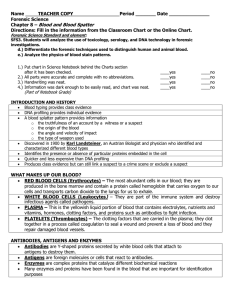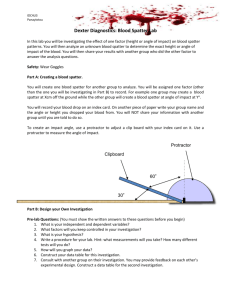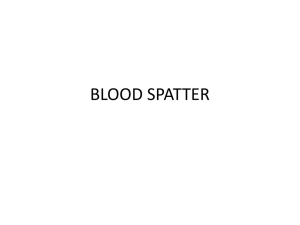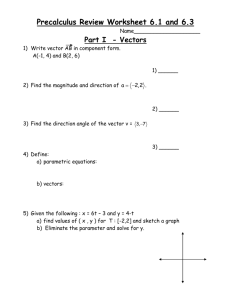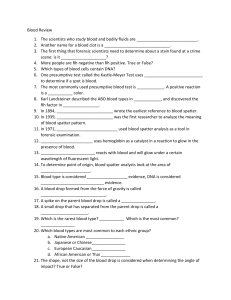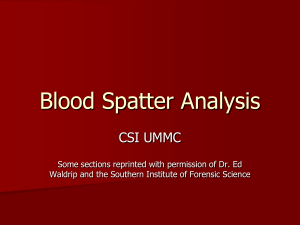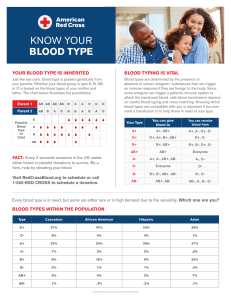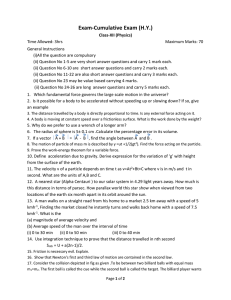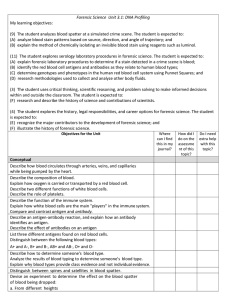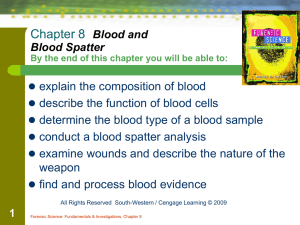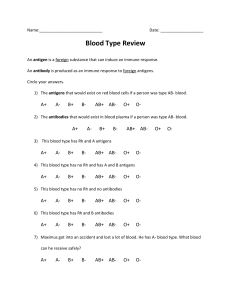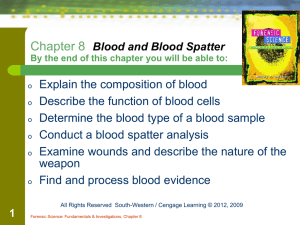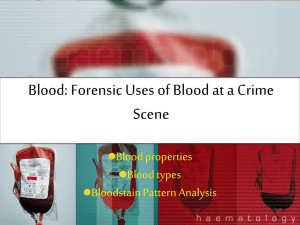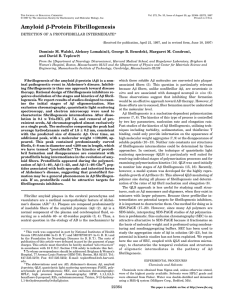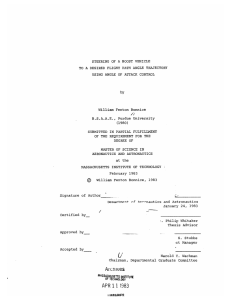Blood Patterns - Red Hook Central School District
advertisement
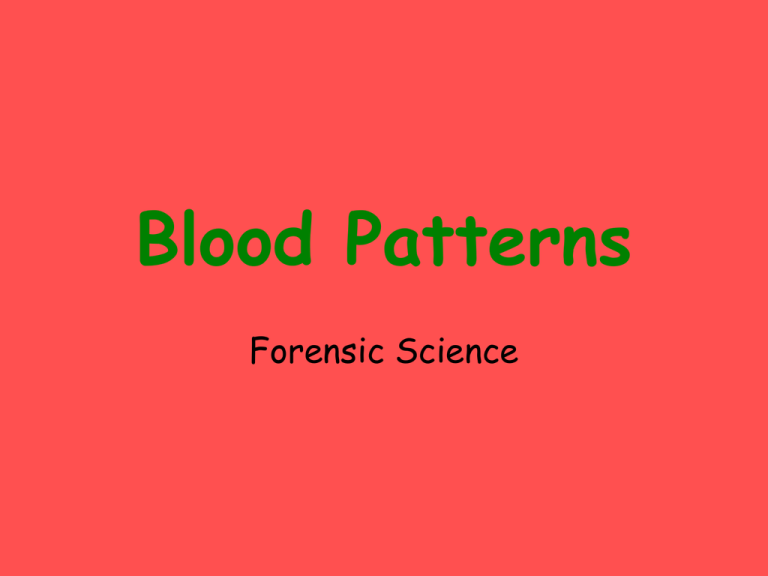
Blood Patterns Forensic Science A Brief Intro to Blood Spatter Analysis • Blood contains DNA, so it is possible to identify its exact source. • The shape of the spatter indicates: 1. the point of origin 2. direction of travel, and 3. angle of impact. • Certain chemicals can detect the presence of blood even when it is not visible BLOOD TYPES • Four types of blood- A, B, AB, O Type Type Type Type A contains the A proteins B contains the B proteins AB contains both A & B proteins O contains neither A nor B proteins The Rh Factor • This is the + or – after the blood type A+, A-, O+, O-…and so on. + means the Rh protein is present, - means the Rh protein is absent BLOOD COMPATIBILITY • Type O- is the universal donor- all other blood types can accept type O blood • Type AB+ is the universal recipient- it can take all other types of blood MORE ON COMPATIBILITY Type Type Type Type Type Type Type Type O+: takes O- or O+ O-: takes OA+: takes A+, A-, O+ or OA-: takes A- or OB+: takes B+, B-, O+ or OB-: takes B- or OAB+: takes A+, A-, B+, B-, AB+, AB-, O+, OAB-: takes A-, B-, AB-, O- Basic Info on Shapes of Drops • The “tail” points in the direction of travel. • Drop at 90 degree angle will be circular. • Drop at less than 90 degree angle will be elliptical PRESERVING BLOOD EVIDENCE • Never place bloody evidence in plastic…it could promote mold growth and destroy the sample. • Blood soaked evidence should be placed in paper. NEXT: EXAMPLES OF BLOOD SPATTERS Arterial Blood Cast Off Drip Flow Pattern Hair Pattern Low Velocity Medium Velocity High Velocity Swipe Pattern Transfer from Hammer Transfer from Screwdriver Transfer from Fingers Transfer from Footwear Transfer from Knife Blade Wipe from Drying Blood Drop The End References: Forensic Science: An Introduction to Scientific and Investigative Techniques by Stuart H. James & Jon J. Nordby Images from www.peelpolice.on.ca

